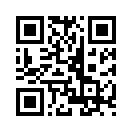What was true 89 years ago is still true today.
This is from Talking Media Sales:
Are Your Clients Wasting Their Advertising Dollars?
Written by Graham BarrThe US department store owner John Wanamaker is best remembered for his famous quotation: “Half the money I spend on advertising is wasted; the trouble is I don’t know which half”. Mr Wanamaker passed away in 1922; unfortunately this flip remark is still earnestly quoted today. It’s a great pity because it is neither necessary nor prudent to waste money on advertising. With planning it is not difficult to work out where any wastage is happening and why some advertising works so much better than the poor performing variety.
Never lose sight of the role of Advertising
Advertising in whatever form it takes is a method of communication. Marketers should never lose sight of the fact that the role of their advertising is to communicate with fellow human beings. Obscuring the message behind fancy graphics and clever “creative” executions does not serve the purpose of the advertising. That is not to say that the advertising should be without imagination and creativity. On the contrary, it is important that if your message is to be seen and heard above the cacophony of advertising messages it has to “stand out” and be noticed. Unfortunately too often the creativity involved in helping the advertising to “stand out” sacrifices the very message it was designed to convey.
Get your advertising strategy right first
That brings us back to the question of wastage of advertising dollars. The single most common mistake made by advertisers is to embark upon the process of media selection and creative execution without completing a vital first step. That is the preparation of a comprehensive advertising strategy. With the benefit of a strong advertising strategy marketers will more easily make their media choices and will see for themselves what if any advertising dollars are destined to be wasted. Experience has proven that strong advertising strategies serve to focus efforts, eliminate false starts, and go a long way toward ensuring that ineffective advertising doesn’t get made.
With a focused strategy in place a relevant advertising brief can be prepared setting out such facts as who we are to communicate with and what we are endeavouring to convey. We should also be aware of what would motivate them to act upon our entreaties. In other words we should clearly establish what we are trying to achieve with the advertising. Once a brief has been written it should be the blue print for both media selection and creative execution.
Who are you advertising to?
Making media choices are much easier when we know who our audience is. How effectively we convey that message (the creative execution) will be determined by how much we know about that audience.
Remember that advertising is a communications tool and its true worth can only be measured against communication objectives. It therefore behoves all advertisers who want to know how well their advertising is working to set realistic and achievable communication goals. Such goal(s) should be established at the early planning stage.
Wastage of advertising dollars can be minimised with an effective strategy that clearly indicates what the advertising is expected to do, against which audience it should be directed, and why this target should believe what we are telling them or act as we want them to.
PHOTO – By Bain News Service, publisher.The Mystery Man at Wikimedia Commons
Sphere: Related Content









